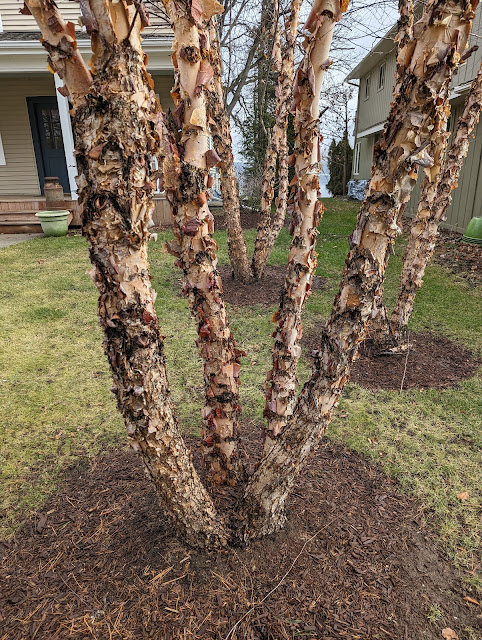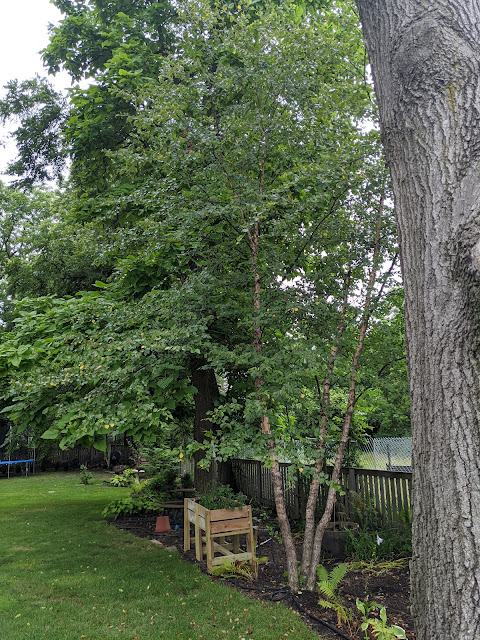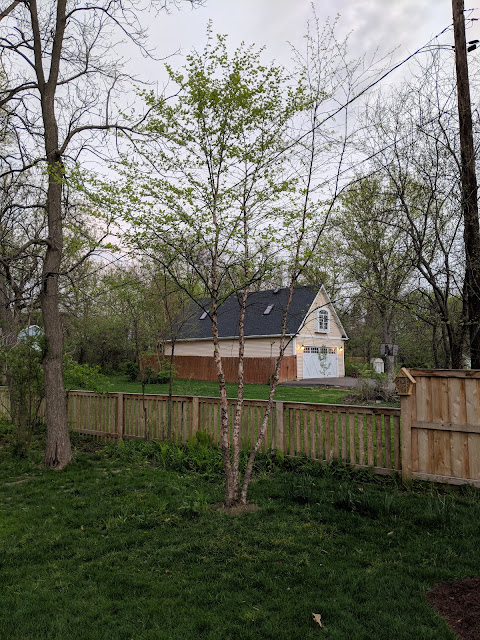Climbing Hydrangea Planted On River Birch - May 2025

At the recent Morton Arboretum Arbor Day Plant sale, I bought a new Climbing Hydrangea for our backyard. This one is in a one-gallon container and priced at just $28. Here, below, is the sign from the sale that includes a couple of photos and a description showing it can reach thirty-feet tall and can tolerate part shade and/or full shade. The scientific name is Hydrangea anomala subsp. petiolaris. Here is the climbing hydrangea in the nursery pot with the small wooden trellis supporting the vine. I'd say the vine is 18" tall from the soil-level: Climbing Hydrangea Below is the plant tag from the pot that says: "Showy white flowers in summer. Self clinging vine." This is our second climbing hydrangea. I put one in the backyard by the firepit in 2023 . At first, the vine was doing well. But, last year it suffered a setback. Here's a post from September of 2024 when the vine had declined . I'm not sure if it was...



